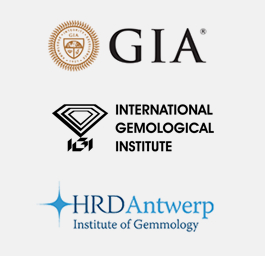Certificate

Diamond Experts Int.
Certificate
Some labs are more strict, and some are more loose. All that matters, though, is that you pay the right price for the diamond you are buying. If you are buying online blind (using cutting edge diamond viewing tool is very much recommended), then stick with the GIA which is the most consistent lab available.
When you’re a big diamond company, and you’re sending thousands of stones a month to a lab, 5% inconsistency isn’t such a big deal. But as a consumer, why risk being stuck with that 5%? Just always keep in mind that you are buying a diamond, not a piece of paper.
When choosing a diamond, the reliability of the color and clarity grades (and in some instances the cut grades) is only as good as the certifying gem lab’s reputation. But there’s one important thing to remember, the only thing that really matters when discussing different labs is not how strict they are, but how consistent they are. If one lab consistently offers a single color upgrade over another lab, then that lab is by no means less “authentic.”
All diamond grading is subjective, and contrary to popular belief, there is no one central organization to define mathematically what a “G” color is or what an SI1 clarity looks like. So if one lab will consistently call one color grade “G” while another lab will consistently call that same color “H”, it’s perfectly acceptable and reasonable — as long as they do so consistently. You, as a consumer, though, need to remember one more very important thing: the price needs to be right for the diamond, regardless of the accompanying certificate.
Also, it is important to realize that every lab has its quirks. Some are looser in color. Some are looser in clarity. Some will always upgrade specific color ranges, while others favor particular arrangements of inclusions. Smart diamond companies use this knowledge (gained from sending thousands of diamonds a month to different labs) to maximize their results.